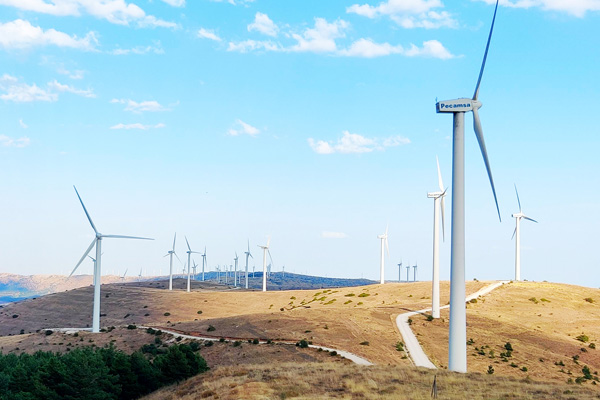More than a hundred CSIC scientists meet in Madrid to promote the energy transition
The TRANSENER+ platform, of which ICMM is a part, celebrates its first Scientific Conferences on March 1 and 2 in Madrid.

The Interdisciplinary Thematic Platform (PTI) TransEner+ (Sustainable Energy Transition) of the CSIC, in which the Institute of Materials Science of Madrid (ICMM) is integrated, will have its first Scientific Conferences on March 1 and 2 in Madrid. During the event, the most recent milestones obtained to date are highlighted, as well as the impact of the results and their transfer to the business fabric and society.
Coordinated by researchers Clara Blanco, from the Carbon Science and Technology Institute; and Antonio Chica, from the Chemical Technology Institute (CSIC-UPV), the platform is made up of more than 200 scientists from 44 research groups belonging to 20 centers in the CSIC of different disciplines. Among others, there are three research groups of the Institute of Materials Science of Madrid (ICMM).
The Conference will have the participation of different institutional representatives of the CSIC, the scientific coordinators of the ongoing projects, and other external partners and collaborators, including representatives of some of the different companies that actively collaborate with the interdisciplinary thematic platform.
The meeting, which will take place in the assembly hall of the CSIC headquarters in Madrid, has been structured into eight sessions that will address, among others, renewable generation and efficient energy storage, industrial decarbonization, hydrogen technologies, and electrification. Likewise, there will be two plenary conferences that will be given by Rosa Palacín, from the Barcelona Institute of Materials Science (ICMAB), who will address the current context of energy storage; and José Miguel Bermúdez, from the International Energy Agency, who will discuss the current situation of hydrogen and future prospects.
With these conferences, the aim is to share the latest advances in the field of the energy transition, address topics of interest from which new collaborations may arise, and strengthen the CSIC's alliances with the industrial sector.
The Materials Science Institute of Madrid is part of this interdisciplinary thematic platform with three research groups:
Bioinspired Materials Group: with more than 20 years of experience in the field of energy storage and generation, it focuses its activity on the design, preparation, physicochemical and electrochemical characterization of eutectic mixtures and aqueous solutions for use as electrolytes in systems (both redox and capacitive) for energy storage, with the aim of improving its efficiency, stability, and cyclability, as well as to facilitate future scaling. Specifically, it participates in the initiative to develop a vanadium redox flow battery demonstrator (50kW).
Energy Conversion and Storage Group: it deals with preparing and characterizing materials related to energy. This includes materials for Li/Na batteries; materials for solid oxide fuel cells (SOFC), cathodes, anodes, and electrolytes; materials for supercapacitors; energy storage materials (metal hydrides); thermoelectric materials for energy harvesting (chalcogenides and pictures); materials for collecting solar energy (hybrid perovskites). After synthesis, structural characterization using neutron techniques, synchrotron X-ray diffraction, X-ray absorption, etc. is a priority, in order to establish relationships between the structure and the properties. In addition to the characterization of the properties of interest, the materials are tested in prototypes (SOFC mono cells, Li, Na button cells, supercapacitor cells) and their electrochemical characteristics are evaluated.
Heterostructures for Optics, Optoelectronics, and Coatings Group: its objectives are focused on exploring, obtaining, studying, and optimizing new materials: thin films and heterostructures, 2D materials (graphene and transition metal chalcogenides), 0D nanostructures, for innovative applications in optoelectronics (optical detection and imaging, PV, LEDs) and in magnetocaloric and thermoelectric systems. On the other hand, at the most applied level is the improvement of coatings for the management of solar thermal energy, transparent electrodes, and of electrodes in electrolyzers for the generation of hydrogen.
Instituto de Ciencia de Materiales de Madrid (ICMM)
Sor Juana Ines de la Cruz, 3
Cantoblanco, 28049
Madrid, España
Telephone: (+34) 91 334 90 00
Email: @email
Communication Office: @email

Acknowledge the Severo Ochoa Centres of Excellence program through Grant CEX2024-001445-S/ financiado por MICIU/AEI / 10.13039/501100011033

Contacto | Accesibilidad | Aviso legal | Política de Cookies | Protección de datos